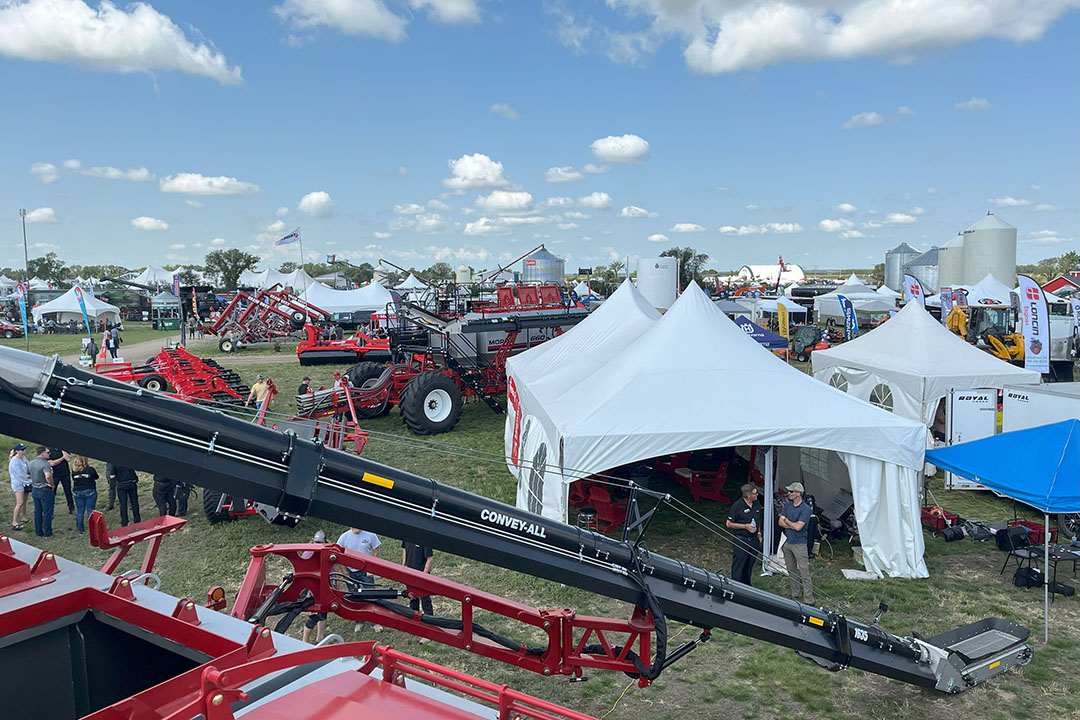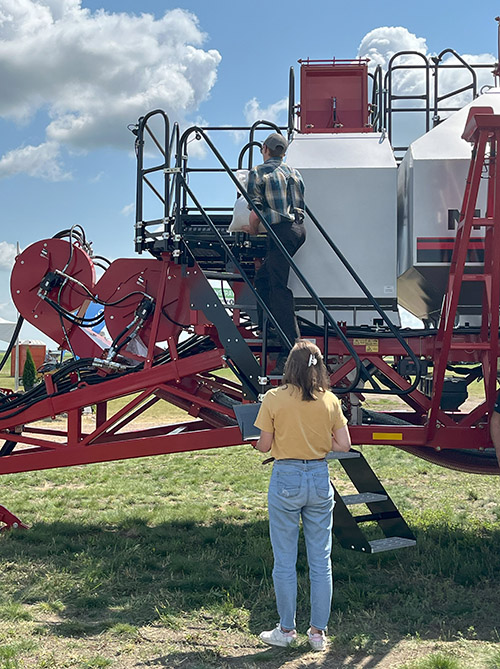
USask farm shoulder study shows research in action at Ag in Motion
The Canadian Centre for Rural and Agricultural Health (CCRAH) at the University of Saskatchewan (USask) partnered with industry to conduct much-needed research at the annual Ag in Motion outdoor agricultural show.
By CCRAH COMMUNICATIONSDr. Angelica Lang (PhD), faculty lead of the musculoskeletal and ergonomics lab at CCRAH and assistant professor in the College of Medicine's Department of Medicine, is researching shoulder movement during basic farm tasks to better understand how common shoulder injuries develop in farmers.
“At first, I thought I’d go to Ag in Motion to recruit farmers. We’ve been visiting farmers on their own farms to conduct the study, so I thought the event would be a great opportunity to recruit participants,” Lang said.

One of the limiting factors for the study is that it requires one major piece of agricultural machinery: the air cart for a seed drill. These are usually found on farms.
“But then, Morris Equipment came forward. They let us set up the research study right on their site at Ag in Motion and use their air cart on site. That way, we could recruit farmers and have them do the study immediately,” Lang explained.
Morris and its sister company, RiteWay Manufacturing, sell agricultural equipment including air carts and seed drills. Garth Massie, Canadian sales and marketing manager for Morris, provided the research group space on their site, and access to the air cart at the show, which took place near Langham, Sask. from July 16 to 18.
The research team ran each farmer through a series of questions, then put sensors on their arms, sternum, and shoulders and made sure the sensors were calibrated. Each farmer then did three repetitions of four regular on-farm tasks: drilling a screw into wood at eye level, shoveling some dirt, carrying a 30-pound bag up the seed drill tank, and then (pretending) to pour the seed into the tank.
“Our customers are farmers. It made sense to have the centre researchers set up on our site, so the farmers could run through all the tests,” Massie said.
“As a scientist, I think they’ll get really good data from doing the study at our Ag in Motion site, maybe even better than going farm-to-farm. All of them used the same drill, the same shovel, and walked up and down the same air cart.”

Lang said the partnership came together quickly. Morris supported the idea of running the study at Ag in Motion and made sure there was space on their site for a small tent and access to the air cart. The Ag in Motion organizers also supported the plan.
The CCRAH, via their Agricultural Health and Safety Network, has regularly attended Ag in Motion, sharing health and safety resources with farmers. Those working at the booth helped to recruit farmers for the study and sent them over to the outdoor Morris booth.
Lang said that the study was able to recruit nearly 20 male and female farmers, which was a great opportunity for the study, and for her lab.
“The students had a really active role, connecting with farmers, answering questions, and walking them through the tasks,” she said. “It was a learning opportunity for everyone.”
Dr. Shelley Kirychuk (PhD), director of the CCRAH, said that this partnership showcased the important relationships between agricultural industries and the centre’s health research.
“There is no agriculture without farmers,” she said. “Our Centre is founded on supporting rural and agricultural people to live and work healthy and safe. Industry knows that our work is central to a thriving agricultural industry not just in Saskatchewan, but across Canada and around the world.”
“We are thankful for, and proud of, the great research partnership with Morris Equipment at Ag in Motion,” she added.
